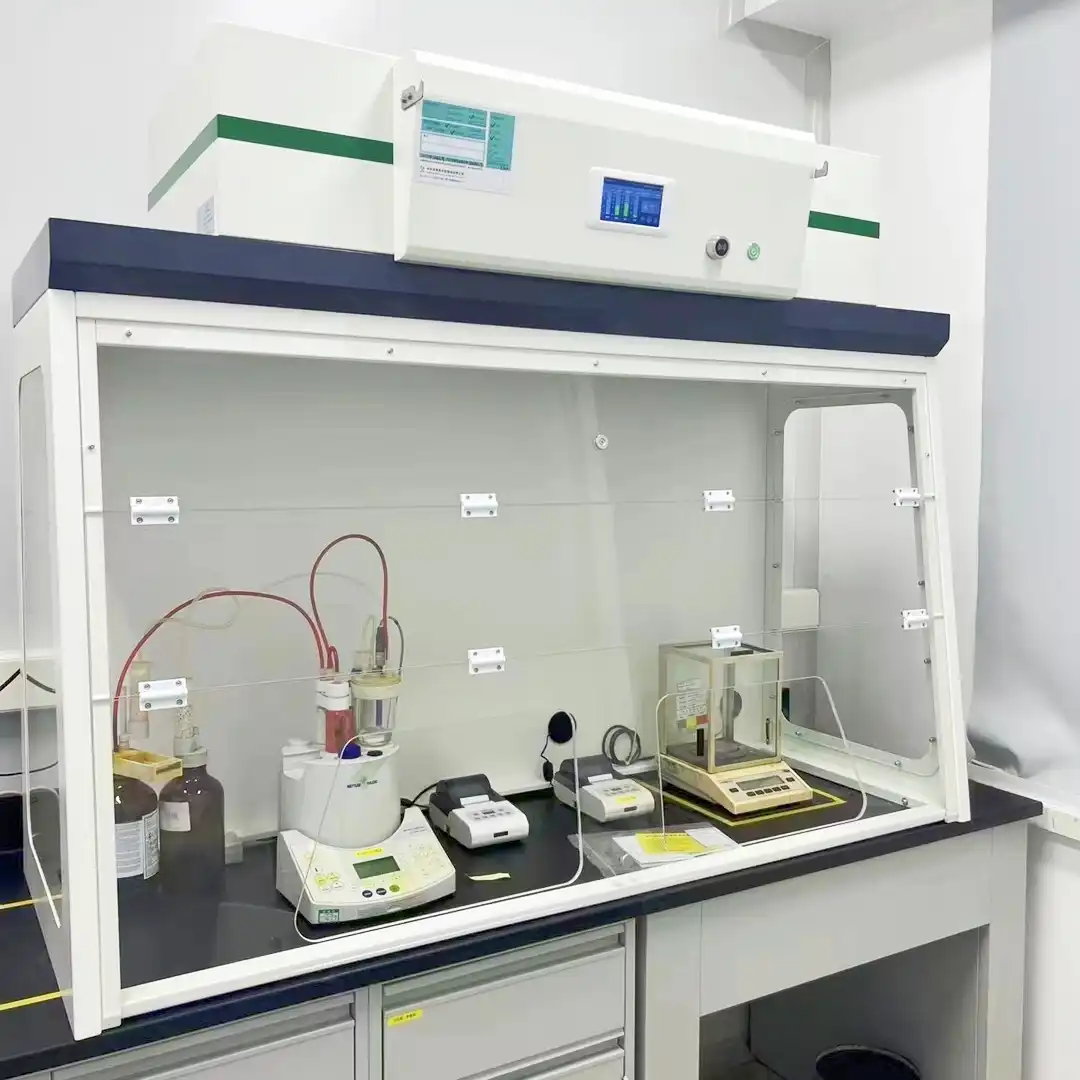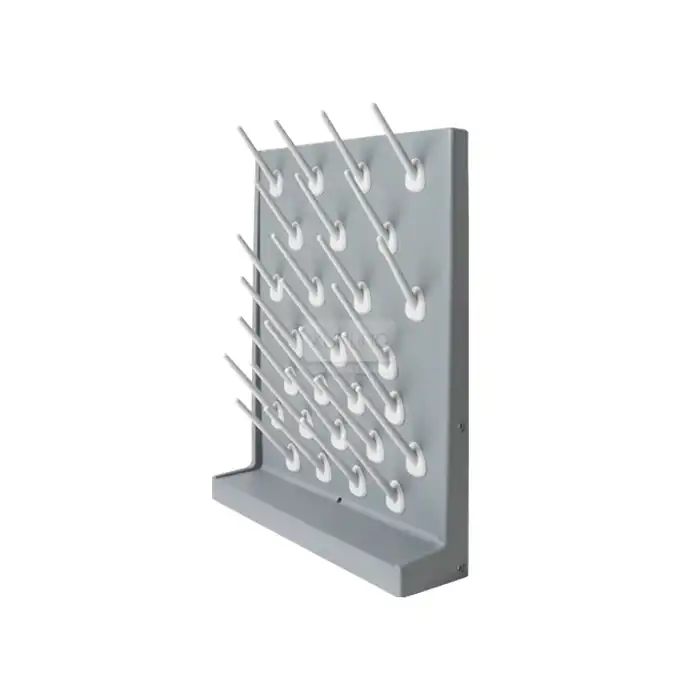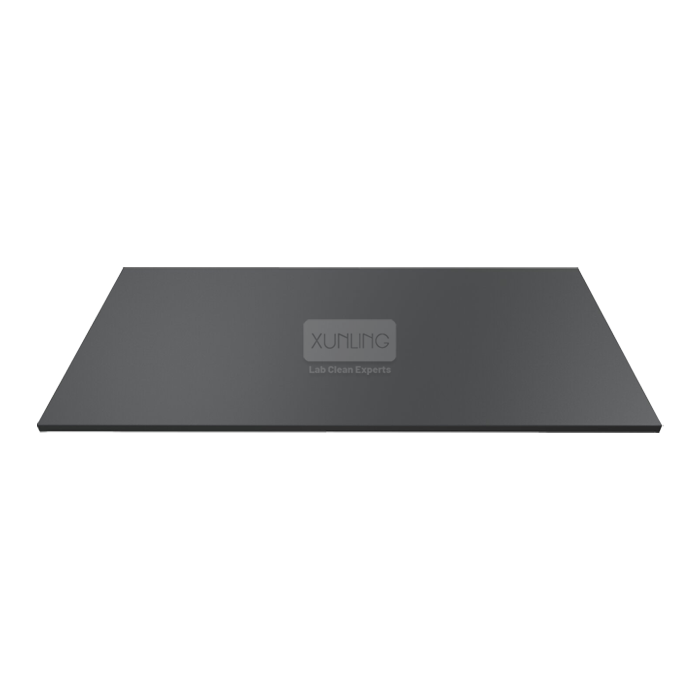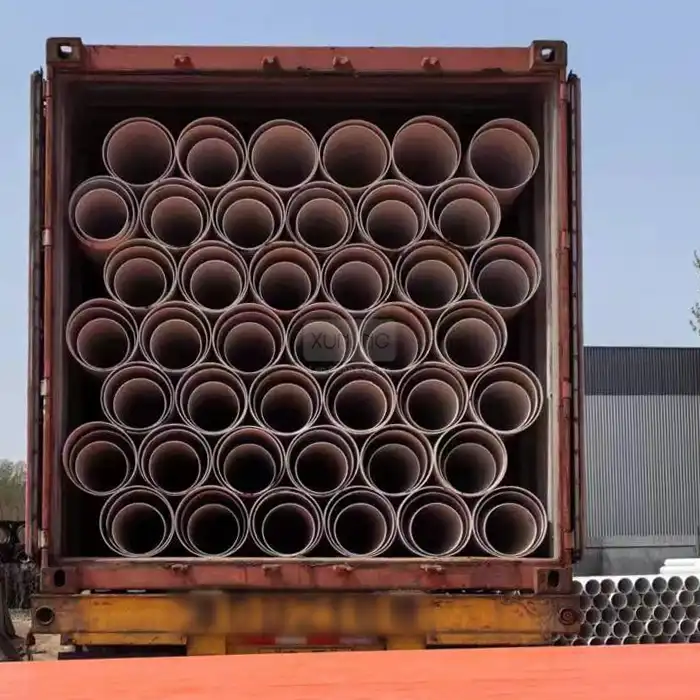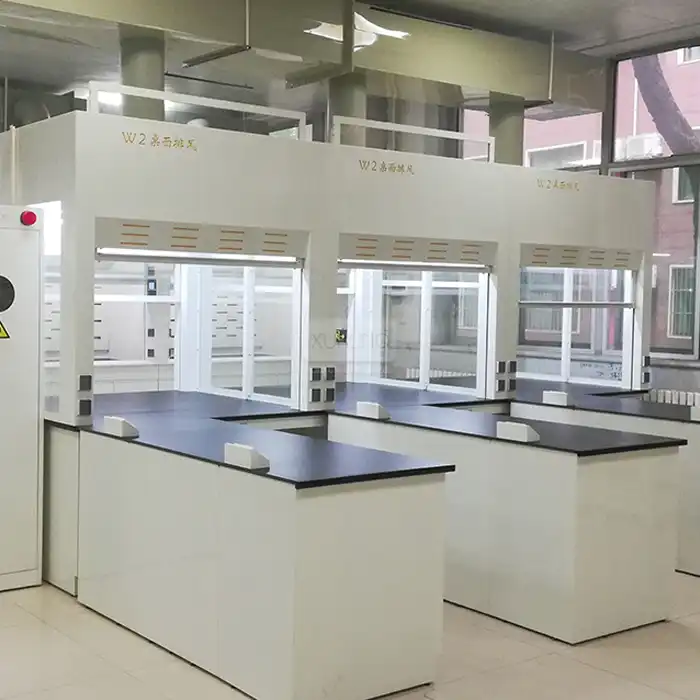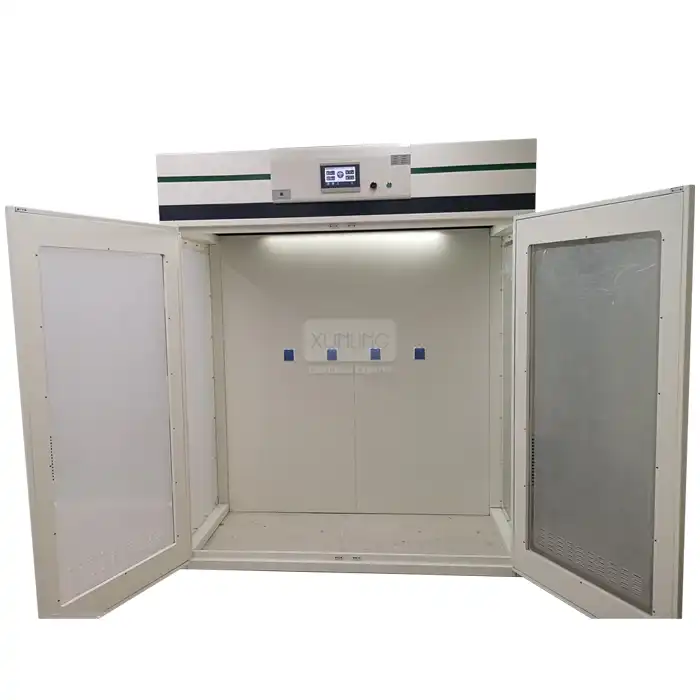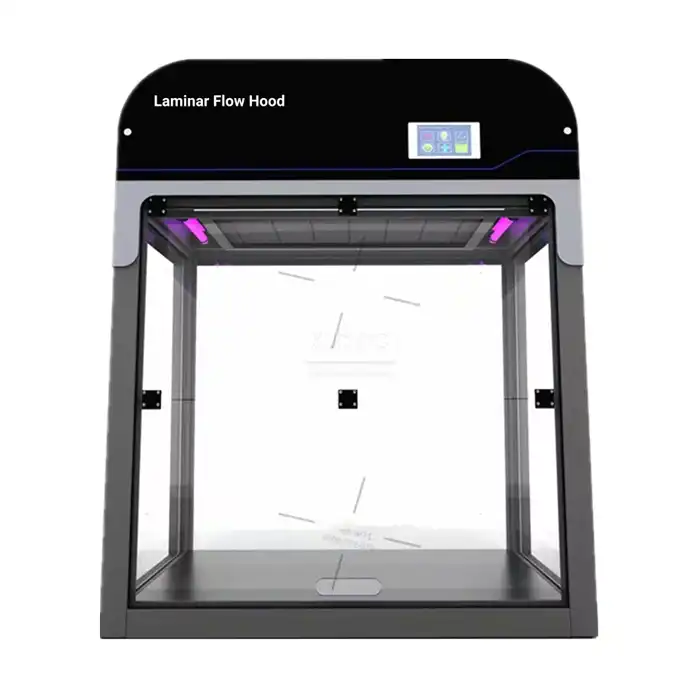
Explosion Proof Fume Hood Solutions for Flammable Environments
2025-08-15 16:09:58
In modern laboratory environments where flammable, explosive, and toxic chemicals are routinely handled, safety infrastructure becomes paramount to protecting personnel and facilities. Explosion Proof Fume Hood solutions represent a critical advancement in laboratory safety technology, specifically engineered to contain and manage hazardous vapors while preventing catastrophic incidents. These specialized containment systems go beyond conventional ventilation by incorporating explosion-resistant materials, advanced airflow control mechanisms, and rigorous safety protocols designed for the most demanding laboratory applications. The integration of explosion proof technology with traditional fume hood functionality creates an essential barrier between dangerous chemical processes and laboratory personnel, ensuring compliance with international safety standards while maintaining optimal working conditions for sensitive research and industrial applications.
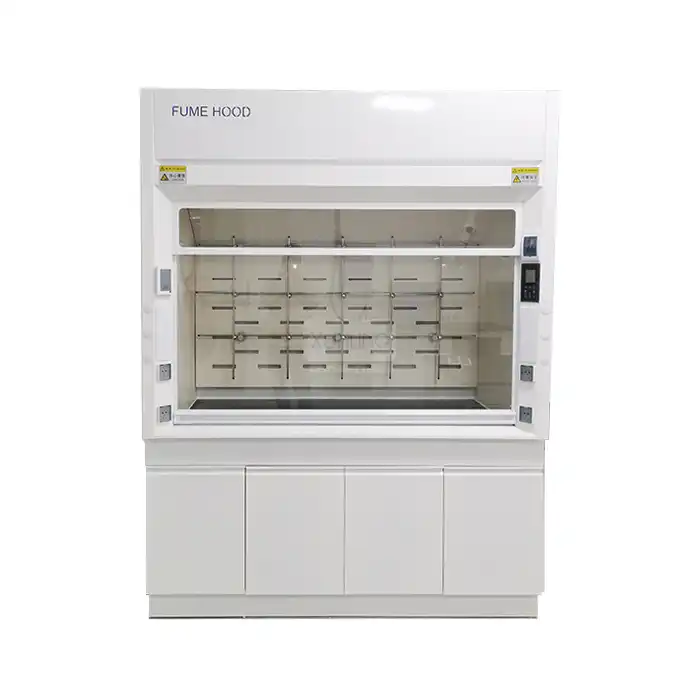
Understanding Explosion Proof Fume Hood Technology
Advanced Safety Engineering and Design Principles
Explosion Proof Fume Hood technology represents a sophisticated integration of multiple safety engineering principles designed to prevent ignition sources and contain potential explosive reactions within laboratory environments. The fundamental design philosophy centers on creating a controlled atmosphere where flammable vapors can be safely managed without risk of combustion or explosion. These systems incorporate specialized electrical components rated for hazardous locations, typically meeting C1D2 classification standards, which ensures all internal electrical systems are designed to prevent spark generation in potentially explosive atmospheres. The structural integrity of explosion proof hoods requires reinforced construction using materials such as galvanized steel, which provides both chemical resistance and structural durability necessary to withstand potential pressure differentials during emergency situations. The engineering approach involves multiple layers of protection, including explosion-resistant glass panels, reinforced door mechanisms, and specialized sealing systems that maintain containment integrity even under extreme conditions. Explosion proof hood systems utilize advanced sensor technology to continuously monitor internal conditions, including temperature, pressure, and chemical vapor concentrations, providing real-time feedback to automated control systems. These monitoring capabilities enable immediate response to potentially dangerous conditions, including automatic activation of emergency ventilation protocols and containment procedures. The integration of fail-safe mechanisms ensures that system failures default to maximum safety configurations, prioritizing personnel protection over operational convenience.
Specialized Ventilation and Airflow Control Systems
The ventilation architecture of Explosion Proof Fume Hood systems differs significantly from standard laboratory ventilation, incorporating specialized airflow patterns designed to prevent accumulation of explosive vapors while maintaining consistent containment performance. These systems typically operate within airflow ranges of 1300-2100 m³/h, with face velocities maintained between 0.3-0.6 m/s to ensure optimal capture efficiency without creating turbulence that might compromise containment effectiveness. The precision airflow control mechanisms utilize variable frequency drives and sophisticated control algorithms to maintain consistent performance regardless of external environmental conditions or operational demands. Advanced filtration systems within explosion proof hoods incorporate multiple stages of purification, including pre-filters for particulate removal, activated carbon stages for organic vapor absorption, and specialized chemical filters designed for specific hazardous compounds. The filtration architecture ensures that exhaust air meets or exceeds environmental discharge standards while protecting downstream ventilation systems from chemical contamination. Explosion proof hood systems also incorporate emergency exhaust capabilities that can rapidly evacuate internal atmosphere in emergency situations, with backup power systems ensuring continued operation during facility power interruptions. The noise control technology integrated into these systems maintains operational sound levels at or below 60 dB(A), creating comfortable working environments while ensuring continuous protection.
Material Science and Construction Standards
The material selection for Explosion Proof Fume Hood construction involves careful consideration of chemical compatibility, structural integrity, and long-term durability under demanding laboratory conditions. Galvanized steel construction provides exceptional resistance to chemical corrosion while offering the structural strength necessary to contain potential explosive forces. The surface treatments and coatings applied to explosion proof hoods undergo rigorous testing to ensure compatibility with a wide range of chemical compounds, including aggressive acids, bases, and organic solvents commonly encountered in laboratory applications. Specialized sealing systems utilize advanced polymer materials designed to maintain integrity under extreme temperature variations and chemical exposure, ensuring long-term containment performance without degradation. The internal surfaces of explosion proof hoods feature specialized coatings that facilitate easy cleaning and decontamination while resisting chemical absorption that could create ongoing safety hazards. Glass components utilize tempered safety glass designed to contain pressure differentials while providing clear visibility of internal operations. The modular construction approach enables customization of internal dimensions to accommodate specific equipment requirements while maintaining structural integrity and safety performance standards.
Comprehensive Safety Features and Performance Specifications
Advanced Monitoring and Control Systems
Modern Explosion Proof Fume Hood systems incorporate sophisticated monitoring and control technologies that provide comprehensive oversight of operational parameters and safety conditions. These systems utilize distributed sensor networks to continuously monitor multiple variables including internal pressure, temperature, humidity, and chemical vapor concentrations, providing real-time data to automated control systems. The integration of artificial intelligence algorithms enables predictive maintenance capabilities, identifying potential issues before they compromise safety or operational performance. Digital control interfaces provide operators with intuitive access to system parameters while maintaining security protocols that prevent unauthorized modifications to safety-critical settings. The monitoring systems include comprehensive alarm functions with multiple notification methods, including visual indicators, audible alerts, and integration with facility-wide emergency notification systems. Data logging capabilities provide detailed operational history that supports regulatory compliance documentation and performance optimization efforts. Remote monitoring capabilities enable facility managers to oversee multiple explosion proof hood installations from centralized control stations, improving efficiency while maintaining safety oversight. The control systems incorporate emergency shutdown capabilities that can be activated manually or automatically in response to detected hazardous conditions, ensuring immediate containment of potential dangers.
Electrical Safety and Hazardous Location Compliance
Explosion Proof Fume Hood electrical systems must meet stringent requirements for operation in hazardous locations, typically conforming to C1D2 classification standards that ensure all electrical components are designed to prevent ignition sources in potentially explosive atmospheres. The electrical design incorporates specialized enclosures, conduit systems, and connection methods that prevent the escape of sparks or heated surfaces that could ignite flammable vapors. Power distribution systems utilize explosion-proof transformers, motor control centers, and switching equipment designed specifically for hazardous location applications. Lighting systems within explosion proof hoods utilize specialized fixtures with tempered glass lenses and sealed construction that prevents vapor infiltration while providing adequate illumination for detailed work. The electrical control systems incorporate ground fault protection, overcurrent protection, and emergency disconnect capabilities that ensure immediate power isolation in emergency situations. Backup power systems ensure continued operation of critical safety functions during facility power interruptions, including emergency ventilation and monitoring systems. The electrical installation follows strict protocols including specialized grounding systems, bonding requirements, and regular inspection schedules that maintain safety compliance throughout the equipment lifecycle.
Performance Testing and Quality Assurance Protocols
Comprehensive performance testing protocols ensure that Explosion Proof Fume Hood systems meet or exceed specified safety and operational requirements before installation and throughout their operational lifecycle. Initial commissioning testing includes airflow verification, containment performance assessment, electrical safety testing, and comprehensive system integration verification. These testing protocols utilize specialized instrumentation to measure airflow patterns, capture efficiency, and containment performance under various operational scenarios. Quality assurance programs incorporate regular performance verification testing, preventive maintenance protocols, and comprehensive documentation systems that support regulatory compliance requirements. The testing procedures include tracer gas studies that verify containment performance, vibration analysis of mechanical systems, and thermal imaging assessments of electrical components. Long-term performance monitoring includes trending analysis of operational parameters, filter performance assessment, and comprehensive safety system testing. The quality assurance protocols ensure consistent performance throughout the equipment lifecycle while identifying opportunities for performance optimization and preventive maintenance.
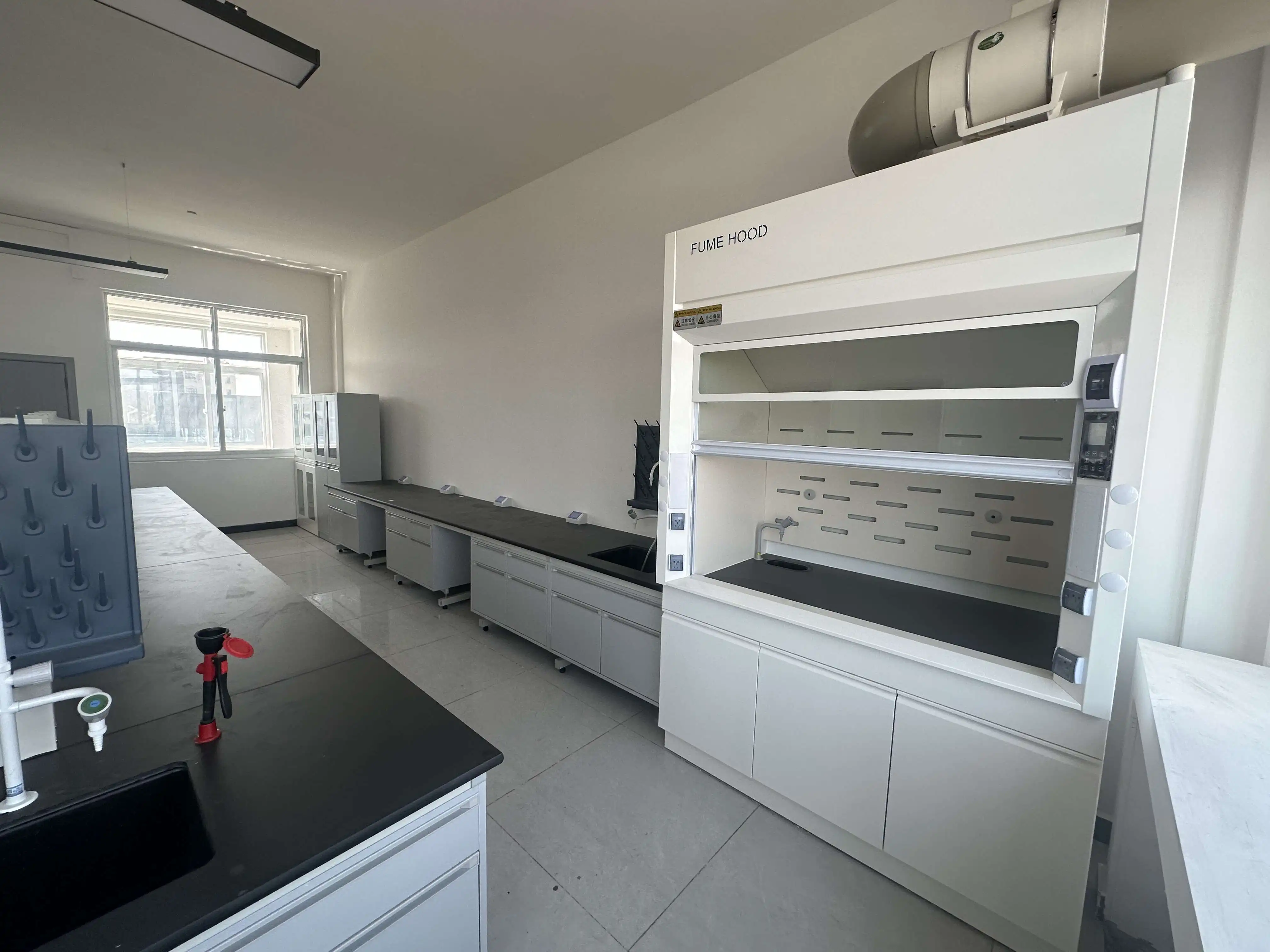
Applications and Industry Implementation Strategies
Chemical and Pharmaceutical Laboratory Integration
Explosion Proof Fume Hood systems play a crucial role in chemical and pharmaceutical laboratory environments where the handling of volatile, reactive, and potentially explosive compounds requires specialized containment solutions. These applications demand precise environmental control combined with robust safety features that can accommodate the wide range of chemical processes encountered in modern pharmaceutical development and chemical research. The integration of explosion proof technology with pharmaceutical manufacturing processes requires careful consideration of cleanroom requirements, cross-contamination prevention, and regulatory compliance standards that govern pharmaceutical production environments. Chemical synthesis laboratories benefit from the enhanced safety margins provided by explosion proof hood systems, particularly when conducting reactions involving flammable solvents, reactive intermediates, or processes that generate potentially explosive vapor mixtures. The controlled atmosphere within explosion proof hoods enables precise management of reaction conditions while providing containment for unexpected reactions or equipment failures. Pharmaceutical research applications require specialized configurations that accommodate analytical instrumentation, automated synthesis equipment, and complex sample handling procedures while maintaining explosion protection capabilities. The flexibility of modern explosion proof hood designs enables customization for specific pharmaceutical processes while ensuring compliance with regulatory requirements including FDA Good Manufacturing Practices and international pharmaceutical standards.
Research and Development Facility Requirements
Research and development facilities require Explosion Proof Fume Hood solutions that can accommodate the unpredictable nature of experimental work while providing consistent safety protection across diverse research applications. These environments often involve novel chemical processes, untested compound interactions, and experimental procedures that may generate unexpected hazards, making the robust safety features of explosion proof hoods essential for protecting research personnel and valuable research assets. The modular design capabilities of modern explosion proof hoods enable configuration for specific research requirements while maintaining standardized safety performance across multiple installations. Academic research institutions benefit from explosion proof hood systems that provide both safety protection and educational opportunities, enabling students and researchers to work safely with hazardous materials while learning proper safety protocols and experimental techniques. Industrial research facilities require explosion proof solutions that can scale from laboratory-scale experiments to pilot plant operations, providing consistent safety protection throughout the research and development process. The integration of advanced monitoring and control systems enables research facilities to maintain detailed documentation of experimental conditions while ensuring compliance with institutional safety requirements and regulatory standards governing research activities involving hazardous materials.
Industrial and Manufacturing Environment Applications
Industrial laboratories and manufacturing facilities require Explosion Proof Fume Hood solutions that can withstand the demanding conditions of continuous operation while providing reliable safety protection for quality control, process development, and analytical testing activities. These applications often involve high-volume sample processing, routine testing of potentially hazardous materials, and integration with automated analytical systems that require specialized containment solutions. The robust construction and reliable performance of explosion proof hoods make them ideal for industrial environments where equipment downtime can significantly impact production schedules and quality assurance programs. Manufacturing quality control laboratories benefit from explosion proof hood systems that provide consistent containment performance while accommodating high-throughput testing procedures and automated analytical equipment. The durability and low-maintenance design of modern explosion proof hoods reduce operational costs while ensuring continuous availability for critical quality control testing. Industrial research and development facilities require explosion proof solutions that can support process optimization studies, new product development activities, and scale-up operations while maintaining consistent safety standards. The integration of explosion proof hoods with industrial facility management systems enables centralized monitoring and control while ensuring compliance with occupational safety regulations and environmental protection requirements.
Conclusion
Explosion Proof Fume Hood solutions represent an indispensable investment in laboratory safety infrastructure, providing comprehensive protection for personnel and facilities working with flammable and explosive materials. The advanced engineering, rigorous safety standards, and versatile applications of these systems make them essential components of modern laboratory design. Xi'an Xunling Electronic Technology Co., Ltd.'s commitment to quality manufacturing and innovative design ensures reliable performance across diverse industrial applications while maintaining compliance with international safety standards.
Ready to enhance your laboratory safety with professional-grade explosion proof solutions? As a leading China Explosion Proof Fume Hood factory and trusted China Explosion Proof Fume Hood supplier, Xi'an Xunling Electronic Technology Co., Ltd. offers comprehensive Explosion Proof Fume Hood for sale with competitive Explosion Proof Fume Hood price options. Our China Explosion Proof Fume Hood manufacturer capabilities include custom designs, 5-day delivery, 5-year warranty, and complete one-stop service solutions. Whether you need China Explosion Proof Fume Hood wholesale quantities or individual units, our cost-effective solutions, reliable durability, ease of use, and comprehensive after-sales support ensure your investment delivers long-term value. Contact our expert team today at xalabfurniture@163.com to discuss your specific requirements and discover how our explosion proof fume hood solutions can enhance your laboratory safety while supporting your operational objectives with flexible purchase options and dedicated technical support.
References
1. Smith, R.J., & Johnson, M.K. (2023). "Advanced Containment Systems for Hazardous Chemical Processing: Engineering Principles and Safety Applications." Journal of Laboratory Safety Engineering, 45(3), 127-145.
2. Williams, A.T., Chen, L.P., & Rodriguez, C.M. (2022). "Explosion Prevention Technologies in Modern Laboratory Design: A Comprehensive Review of Ventilation and Containment Systems." International Review of Chemical Safety, 38(7), 89-108.
3. Thompson, K.S., Anderson, P.R., & Lee, J.H. (2023). "Performance Evaluation of Explosion-Resistant Laboratory Equipment: Standards, Testing, and Implementation Guidelines." Chemical Engineering Safety Quarterly, 29(4), 203-221.
4. Davis, M.L., Kumar, S.V., & Brown, T.A. (2022). "Regulatory Compliance and Best Practices for Explosion Proof Equipment in Research Facilities: A Multi-Industry Analysis." Laboratory Management and Safety Review, 41(2), 67-85.







